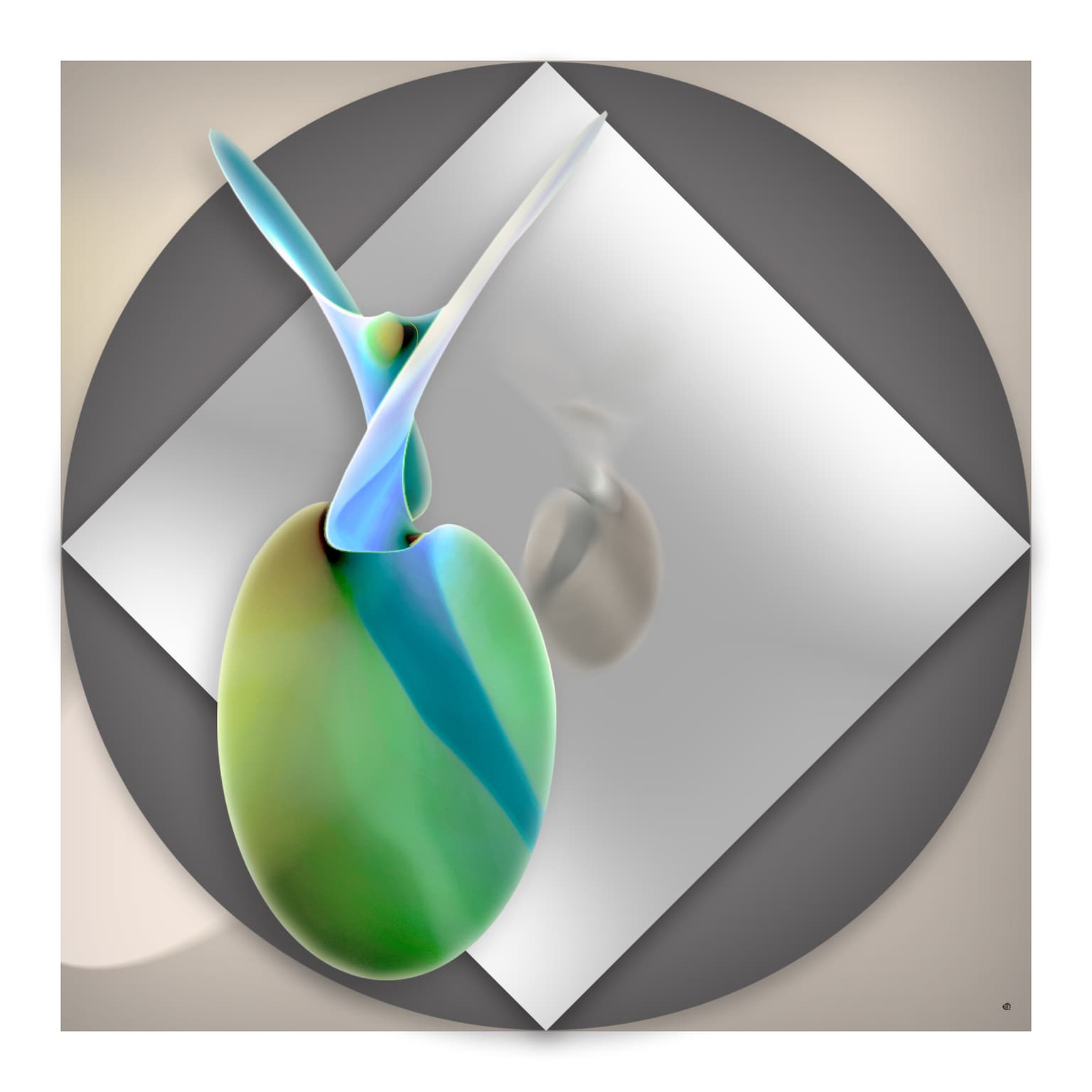Jean Constant
Artists
Jean Constant
Researcher
Hermay NM
Santa Fe, NM, USA
Statement
Physicist J. Plateau, back in the late 1800s, found that soap bubbles may characterize minimal surface best. Today, many sophisticated software allow mathematicians and scientists to explore and discover new and mysterious shapes that contain the signature of a minimal surface - a surface with the smallest possible area for spanning the boundaries of that shape. Minimal surfaces are elegant and complex shapes found in nature, from butterflies, beetles, to black holes. They are studied in fields as consequential as statistics, material sciences, molecular engineering, and architecture.
Artworks

Inverted Boy's surface
80 x 80 x 2 cm
Mixed media ink
2021
Inverted Boy's surface and its reflection on an ad-quadratum mirror. The Boy's surface is an immersion of the real projective plane in 3-dimensional space discovered by mathematician Werner Boy in 1901. This minimal surface is remarkable because its associate family contains an immersion of the triply punctured projective plane. It was discovered independently by Rob Kusner and Robert Bryant in the early 1980s. A model of the surface is on display in front of the Oberwolfach's Math Institute.